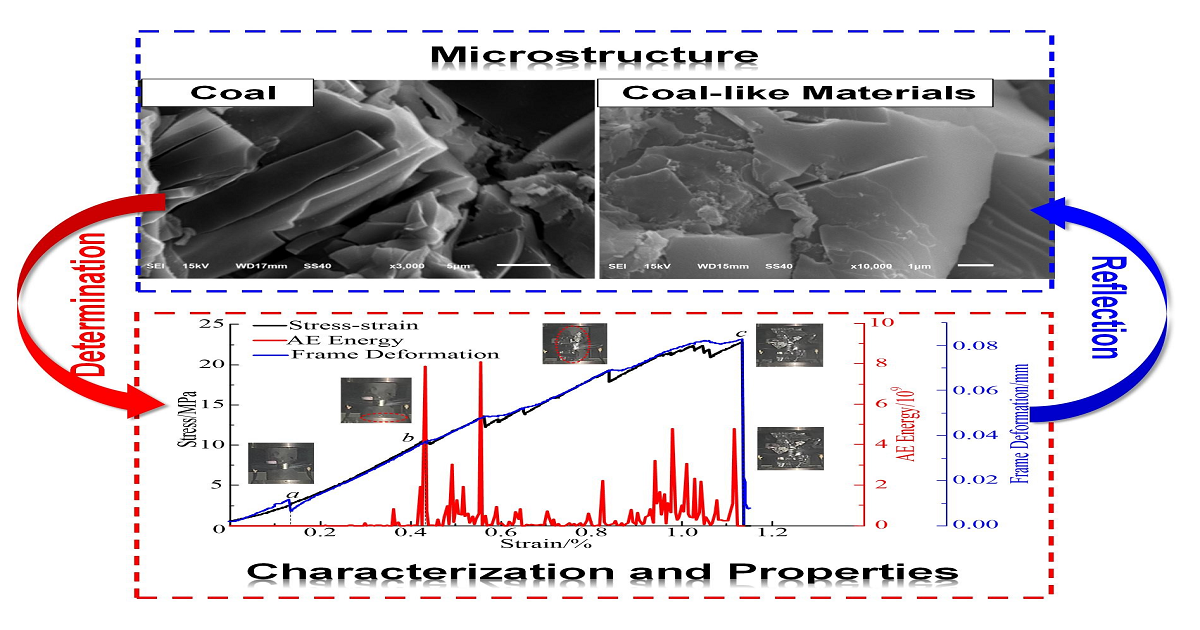- 3.2Impact Factor
- 6.4CiteScore
- 16 daysTime to First Decision
Microstructure, Characterization and Mechanical Properties of Coal and Coal-Like Materials (2nd Edition)
This special issue belongs to the section “Energy Materials“.
Special Issue Information
Dear Colleagues,
In view of the general trend that the development of the global energy industry is oriented toward green, low-carbon and efficient utilization, scientific research teams in various fields dominated by the coal industry have conducted much research on coal and coal-like materials by borrowing the technologies and concepts of modern materials science and rock mass mechanics, hoping to explore new directions for the high value-added utilization of structural coal resources and the development of new coal-like materials.
On behalf of Materials, we invite you to contribute an original research article to a Special Issue on the microstructure, characterization and mechanical properties of coal and coal-like materials.
This Special Issue aims to showcase the latest scientific and technological achievements and cutting-edge test technologies in the study of coal and coal-like materials, with an exploration of their structural change characteristics and mechanical properties under various influencing factors.
Hot topics to be covered by the Special Issue:
- Microstructure of coal and coal-like materials;
- Analysis of mechanical properties of coal and coal-like materials;
- Multiscale characterization of coal and coal-like materials;
- Development and utilization of coal resources with high added value;
- Void structure and seepage characteristics of coal and coal-like materials;
- Establishment of constitutive relationships.
Dr. Xuesheng Liu
Prof. Dr. Yunliang Tan
Dr. Jun Wang
Dr. Deyuan Fan
Guest Editors
Manuscript Submission Information
Manuscripts should be submitted online at www.mdpi.com by registering and logging in to this website. Once you are registered, click here to go to the submission form. Manuscripts can be submitted until the deadline. All submissions that pass pre-check are peer-reviewed. Accepted papers will be published continuously in the journal (as soon as accepted) and will be listed together on the special issue website. Research articles, review articles as well as short communications are invited. For planned papers, a title and short abstract (about 250 words) can be sent to the Editorial Office for assessment.
Submitted manuscripts should not have been published previously, nor be under consideration for publication elsewhere (except conference proceedings papers). All manuscripts are thoroughly refereed through a single-blind peer-review process. A guide for authors and other relevant information for submission of manuscripts is available on the Instructions for Authors page. Materials is an international peer-reviewed open access semimonthly journal published by MDPI.
Please visit the Instructions for Authors page before submitting a manuscript. The Article Processing Charge (APC) for publication in this open access journal is 2600 CHF (Swiss Francs). Submitted papers should be well formatted and use good English. Authors may use MDPI's English editing service prior to publication or during author revisions.
Keywords
- multi-scale characterization
- mechanical property
- microstructure
- void structure
- process waste characterization
- complex porous media
- rock mechanics
- constitutive relationships.

Benefits of Publishing in a Special Issue
- Ease of navigation: Grouping papers by topic helps scholars navigate broad scope journals more efficiently.
- Greater discoverability: Special Issues support the reach and impact of scientific research. Articles in Special Issues are more discoverable and cited more frequently.
- Expansion of research network: Special Issues facilitate connections among authors, fostering scientific collaborations.
- External promotion: Articles in Special Issues are often promoted through the journal's social media, increasing their visibility.
- e-Book format: Special Issues with more than 10 articles can be published as dedicated e-books, ensuring wide and rapid dissemination.

